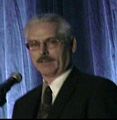ABOUT EAP, THE ECOLOGICAL ACCOUNTING PROCESS: “Local governments need real numbers to deliver green infrastructure outcomes. It is that simple. Tim Pringle’s unusual blend of education and career experience sets him apart from the usual suspects in the ‘ecological services crowd’. He is a sociologist who has a working knowledge of real estate finance. This experience propelled his breakthrough in developing the metrics for EAP,” observed Kim Stephens (March 2022)

“Tim Pringle has demonstrated why and how ‘the parcel’ holds the key to integrating line items for maintenance and management (M&M) of streams systems in asset management budgets. Local government elected representatives and staff understand the parcel perspective because this is what they work with every day. Tim Pringle emphasizes that decisions by elected Councils and Boards are made at the parcel scale. Getting it right about financial valuation of ecological services starts at the parcel scale. EAP is the only ecological methodology that deals with the parcel,” stated Kim Stephens.










